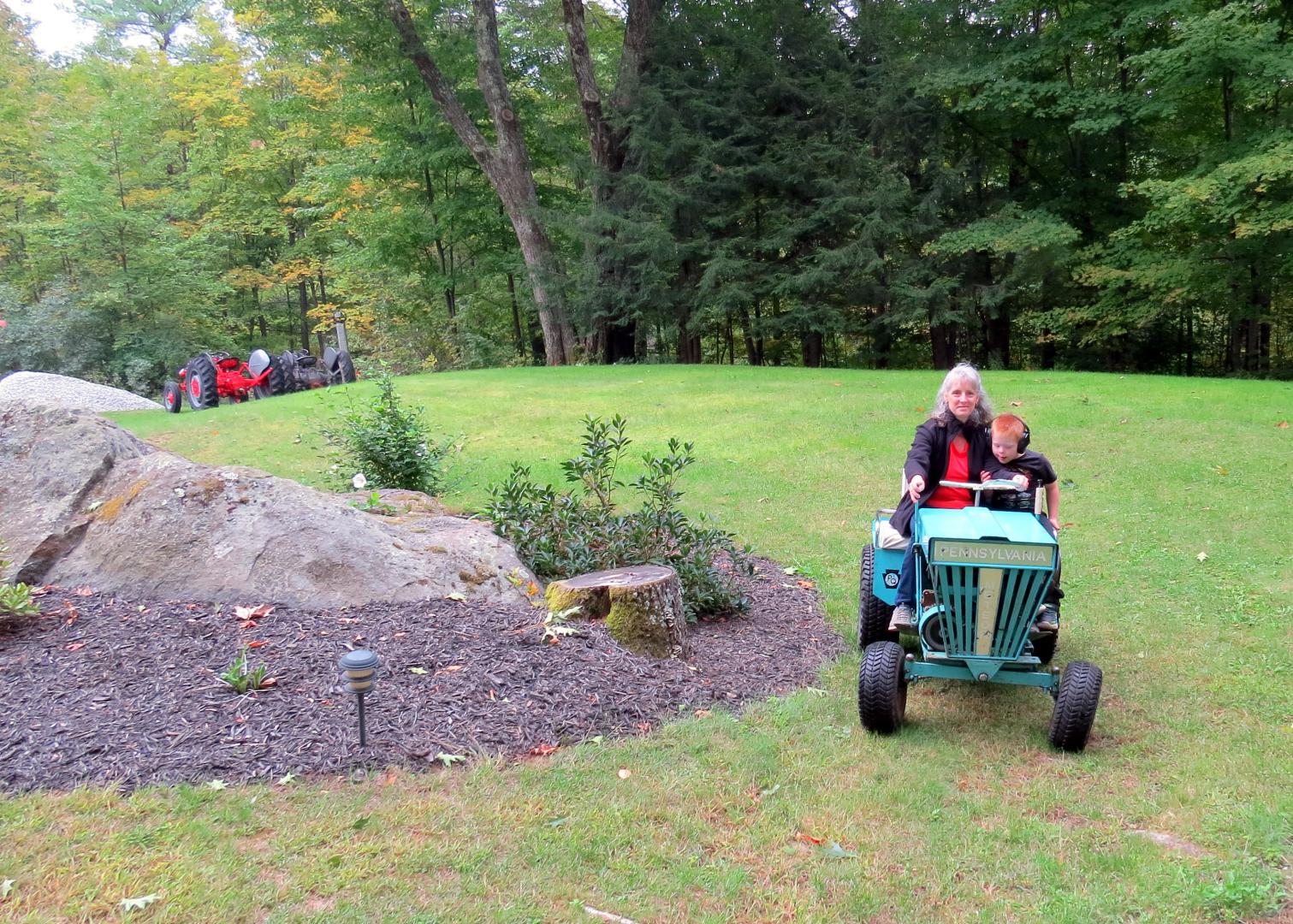
What’s up with the Old Tractors?
Several people have asked me recently “What’s up with the old tractors? You have a couple of new ones, what are you going to do with the antiques?” And sometimes they throw in “and what exactly is Dust and Roots about?” Fair question, but for many I have found there is not a clear or satisfying answer. Are we growing cash crops? How much money are we making off of our website? Do we have sponsors? The answer to all these questions is “no” and that is clearly not sitting well with some. From what I’ve been able to figure out, the disconnect or people’s problem with understanding what we are doing or why we are doing it, seems to come from the money nexus. Apparently, for many, everything needs to be transactional, done for money and profit. And if it’s not… there will be misunderstanding at best, outright suspicion at worst.
A few weeks ago, I had my truck lettered with our farm logo. That ratcheted up the inquiries. “Your truck looks good… what are you selling?” Sometimes followed by “how come you didn’t put your phone number on the truck?” The question is often asked innocently enough, but at other times the inquiry is borderline accusatory. The answer to the lack of a phone number is “there is no reason for anyone to call me”. Turns out that doesn’t help, it seems to further confuse people. When I respond with “we aren’t selling anything” and throw in abstract ideas like “we’re just trying to lead by example, inspire people and show that there are choices to be made about how you live”… I often get uneasy looks. I’ve learned not to add, for emphasis, that in fact all this costs me money. I paid to have the website created. There are annual hosting fees. My truck lettering cost money. The old tractors and the restoration work that goes into them is real money. When I throw stuff like that in, I sense the dark clouds of suspicion gathering on furrowed brows.

To be clear, I’m not saying everybody responds this way, but enough have to make me sit up and take notice. Of course there are some who are very supportive and say things like “good for you, keep it up, I like what you are doing”. But I sense there are others who are trying to figure out my angle. And they are not going to figure out my angle because first of all I’m not sure I have an angle and even if I do, they are looking in all the wrong places. Whatever my real or imagined angle is, it’s not about making money. There are many ways to make money, but this is clearly not one of them. It kind of reminds me of my career choice, I went into fire and EMS because it seemed like a good idea… not because it was the fast track to wealth and success. And, success means different things to different people. I have never believed that success should be defined as the accumulation of wealth. To me, success is doing something useful, something that makes the world a better place and doing it well… period. And it does not have to be some totally self-sacrificing, altruistic undertaking… you don’t have to be Mother Theresa. The Mother Theresa’s of the world are spectacular and do amazing things. But people who go to work and make things that others need, who service and repair things that people use, who work to keep our infrastructure running, are to be commended too. They are useful and making the world a better place. There is another essay on this site called Honest Work that addresses this in greater detail.
We are trying to lead and evangelize a simpler and more grounded life. A life more connected to the earth than the internet. Don’t get me wrong, I like the internet but it’s not a destination. Being resilient, self sustaining and much less dependent on technology and mercantile caprice… feels like a good start. We grow a lot of our own food. We heat our home in several ways; solar and wood are renewable (we harvest our own firewood)… only our oil furnace is dependent on fossil fuel that needs to be purchased. Roughly speaking, only about a third of our heating energy has a fuel cost associated with it. We make most of our electricity with our solar array. Our carbon foot print is smaller and we are better prepared for interruption of services than most. This feels like part of the journey to a more mindful and purposeful existence.
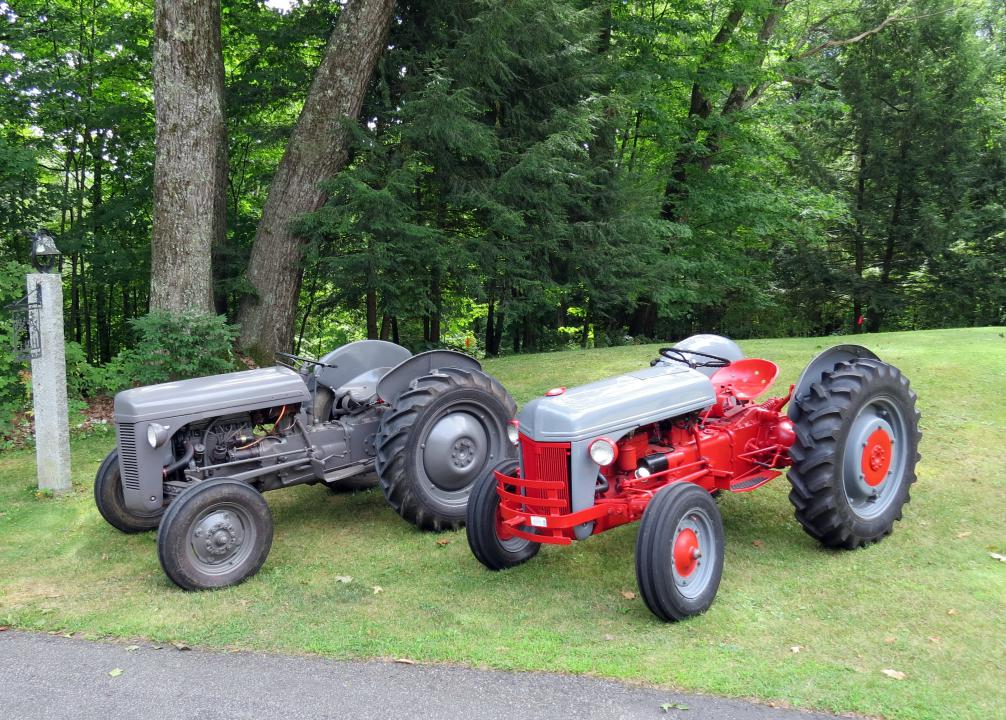
Let’s be honest, what exactly will humanity’s legacy be? We really don’t fit in with the rest of the natural world. We have abused and damaged the planet. We consume resources recklessly and are polluters like no other creature on earth. We pat ourselves on the back and tell ourselves that we are the apex beings on this planet. I’m not so sure. Yes, we create art and music and things of beauty, we can live in a world of ideas… but does that offset the excessive consumption, wastefulness and pollution? Perhaps the beat poet Gary Snider said it best sixty years ago when he wrote “man… despite his conceit, sophistication and accomplishments owes his existence entirely to six inches of topsoil and the fact that it rains”. That’s a humbling thought. It stopped me in my tracks when I read it back then and still resonates powerfully today.
I hope this essay isn’t perceived as a preachy… that’s not my intention. But I am surprised, or troubled that some are suspicious of what we are doing. Most are not openly confrontational, but in some you can feel the distrust. It’s there; it’s palpable and probably isn’t going to go away. But neither are we… we are going to continue doing what we are doing in the hope that we are contributing something useful. So let’s get back to those old tractors because in a real sense they are emblematic of much of what we are trying to do.
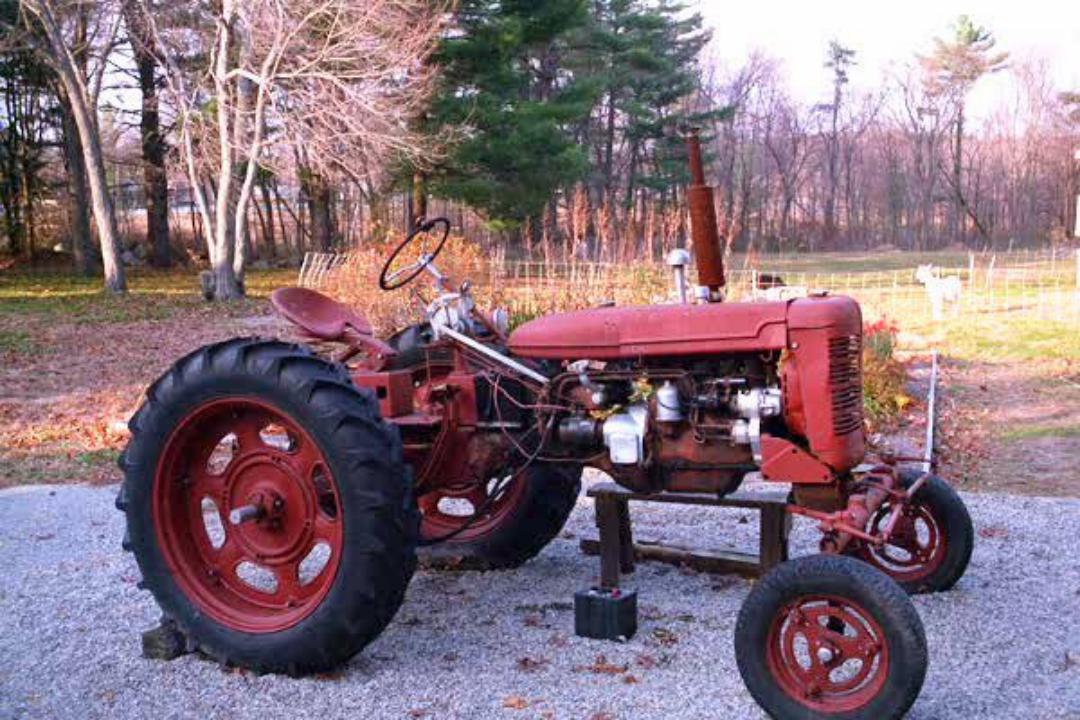
My 1st Farmall, a 1953 Super C
I bought my first old tractor 30 years ago. It wasn’t fixed up or restored. It looked like a 40 year old tractor that had a hard working life. It was a 1953 Farmall Super C with an aftermarket three point hitch. It ran fine and I helped my neighbors (in Westford MA) with their hay fields. I had a two bottom plow and a disc harrow. I used those and towed many a hay wagon. When I first moved to NH, I used the tractor to haul logs out of the woods. I was cutting trees for view cuts and firewood. I put many hours on that old Farmall and when I moved to where I couldn’t keep it any longer, I sold to my good friend Denis who still has it.
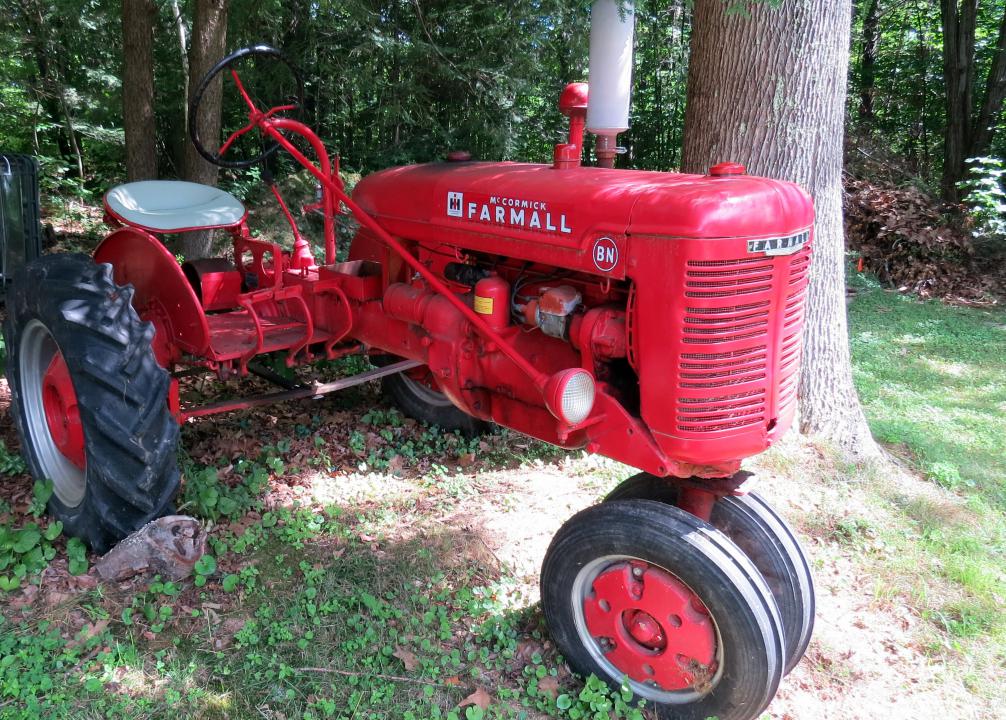
My 2nd Farmall, a 1946 BN
When Kristine and I bought the new house in 2016, I knew it was time for a tractor again. I connected with a lovely older gentleman from Springfield VT who sells a few tractors a year from his house. I bought another Farmall from Dick, this time a 1946 BN, smaller than the super C but in better condition. The problem was what I really needed was a modern front end loader. I could find an old trip bucket loader for the Farmall but they are very limited in what they can do. So I bit the bullet and bought a new Kubota B series compact. Welcome to the modern world… and a tractor payment.
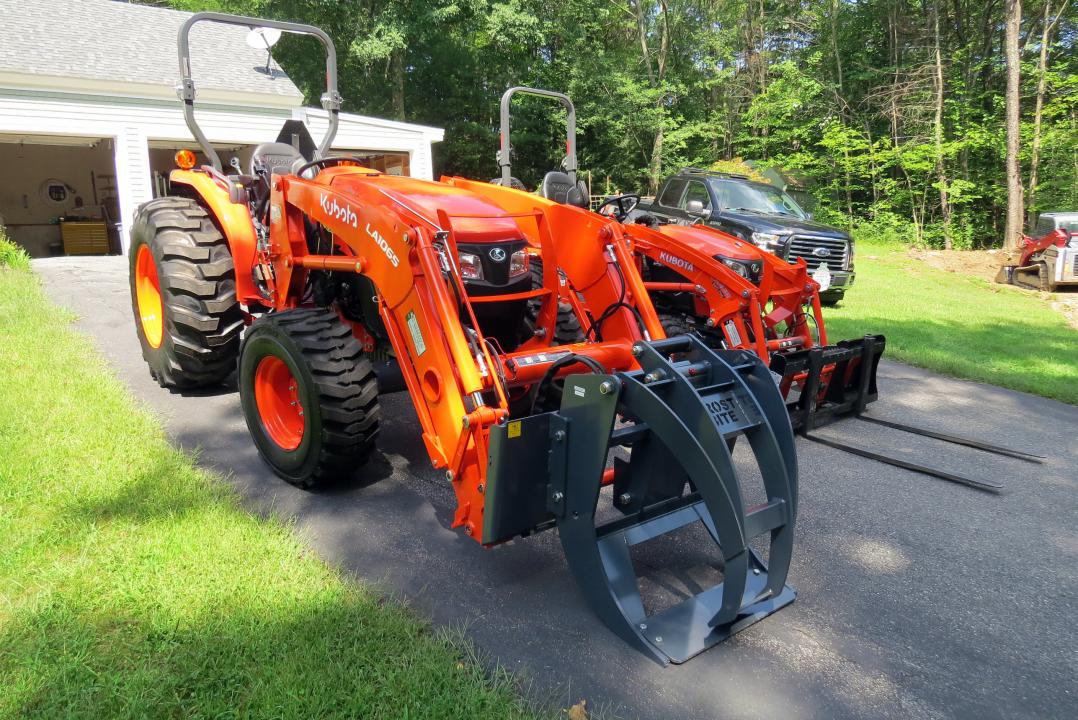
The New Tractors
We were felling a lot of trees on our property, some of which were quite big. The little Kubota couldn’t lift many of the logs. We had a lot of log length firewood but also a lot of potential lumber. So I bought a sawmill to saw lumber for future building projects. And, my timing was good, lumber prices were skyrocketing at the start of the pandemic. If I hadn’t bought the sawmill, I could have cut up the logs for firewood where they were and moved the rounds with the little Kubota. So I bought a big Kubota, an M series with a grapple bucket and serious lifting power. That solved the log handling issues. That’s how the two modern tractors came to be.
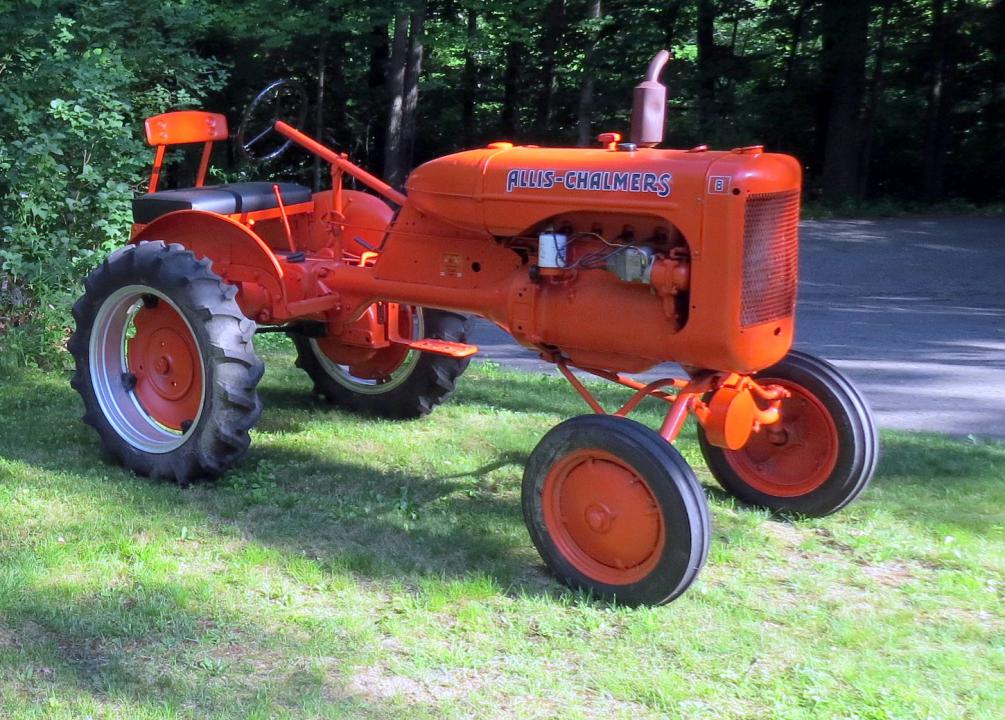
Allis Chalmers 1938 B
Then Dick posted a 1938 Allis Chalmers B on Craigslist. It was in great shape and it is a funky old tractor with hand start only and hand brakes, there’s only one pedal… the clutch. So I bought it. Since then I bought a 1950 Ferguson TO20 (also from Dick) and a 1946 Ford 2N. And then, at this year’s tractor show here in Greenfield, Kristine informs me that there is an interesting antique garden tractor for sale. I’m not really interested in garden tractors (although they are heavily collected) but, I’m open to whatever. When I ask what interesting means, she tells me it’s cool looking, she likes the color and it was manufactured the year she was born. It‘s a 1967 Pennsylvania Meteor made by the long defunct Panzer Tractor company out of Waynesboro VA. It is interesting. It is one of the first hydrostatic transmission tractors, it has a Chrysler automobile rear end and it’s extremely rare. It is cool looking and comes in a sweet sixties pastel color. It runs well, wasn’t very expensive and of course came home with us. We had a birthday party for my oldest grandson Jaden a week later and Kristine gave rides to the younger grandkids on it. The picture at the top of this essay is Mormor (Swedish for grandmother, pronounced moo-moo) giving Jack a ride.
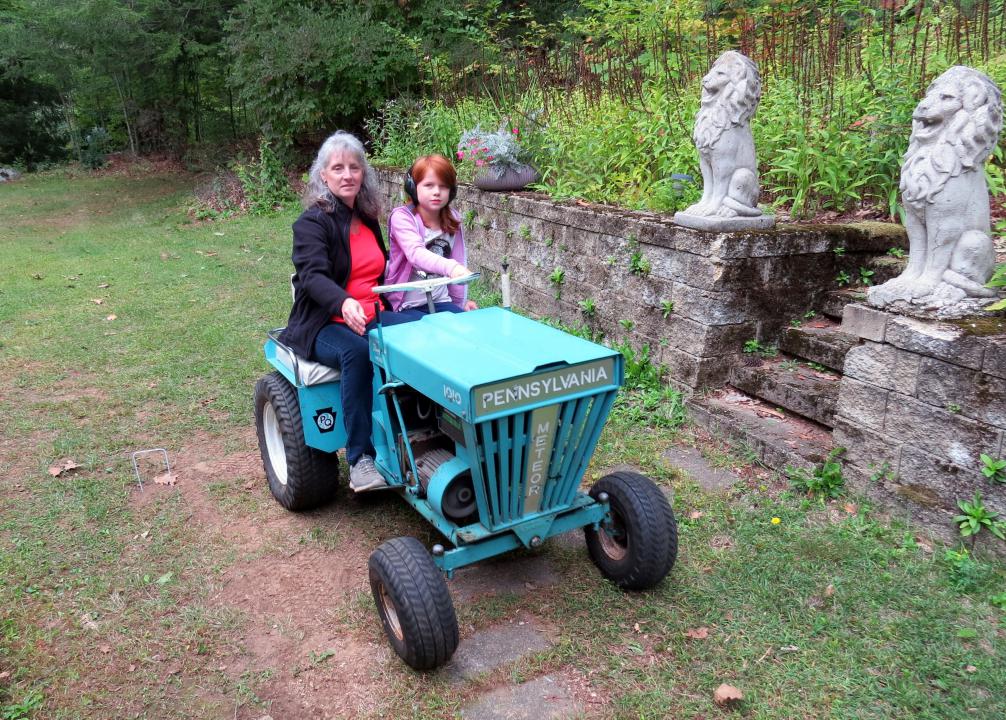
Livvy Driving under Mormor’s Supervision

Jaden Tries the Meteor too…
So the functionality of the two Kubota’s is huge, just like their price tag… but what is the function of the antiques? I believe antique tractors are an important part of our heritage. They should be preserved and I want to be part of that. They can also be functional. If I was clearing land and needed to drag logs or mow with a brushog… the old tractors could do that. The Ford 2N I bought was being used by the seller to brushog fields. I would argue that new homesteaders working with a modest budget might be able to afford $2500 to $3000 for an old Farmall or Ford. It’s a great place to start and much can be accomplished with a tractor like that. I’ve been there… and it worked well for me. And it’s a lot less money than a modern John Deere or Kubota.
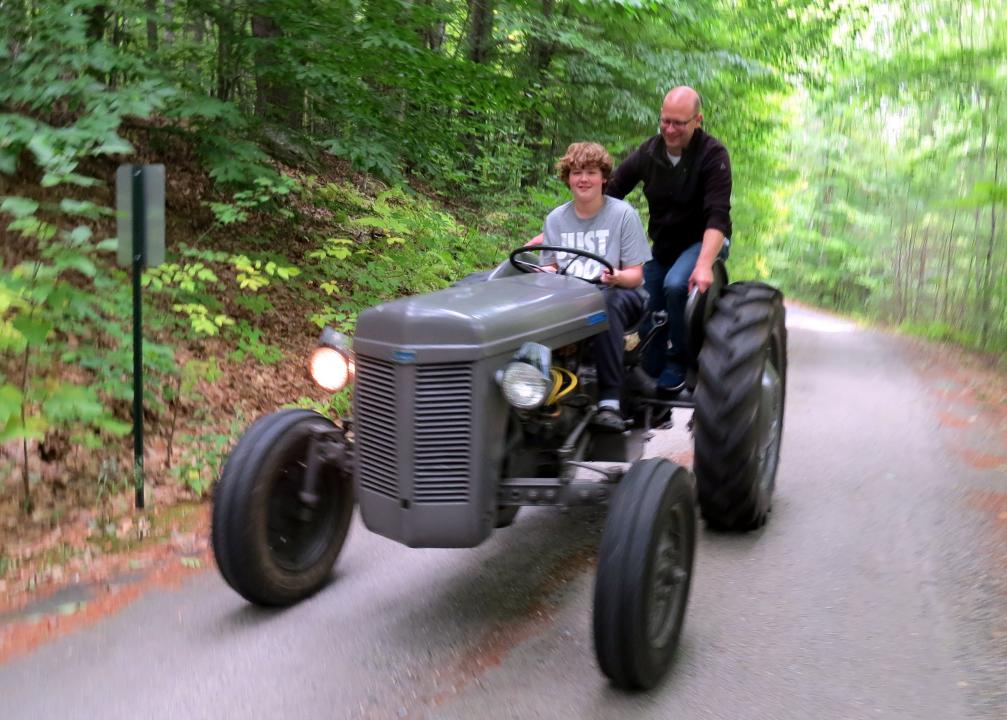
Jaden Learns to Drive a Clutch under Chris’ Supervision
So my old tractors don’t do a lot of work. They are something I enjoy. The restoration and keeping them out of the scrap yard feels like a worthy pursuit. I have a young friend (who pretty much adopted Kristine and me as his parents years ago) who likes working on them with me. His children, although not biologically related to us, are part of our family. Chris will no doubt inherit one or two of these tractors when my time comes. It’s all good as they say. The era from which these wonderful old tractors come may well be the zenith of American manufacturing. There is another essay on this website called America the Manufacturing Great that speaks directly to this. Consider this… the four full sized antiques are all over 70 years old. They all run and are capable of doing a day’s work. That certainly puts them in a different league from so many things manufactured today.

The 2N with the Correct Grill and Paint

Wonderful story about your objectives and the tractors. I am still shaking my head about those who don’t understand this…